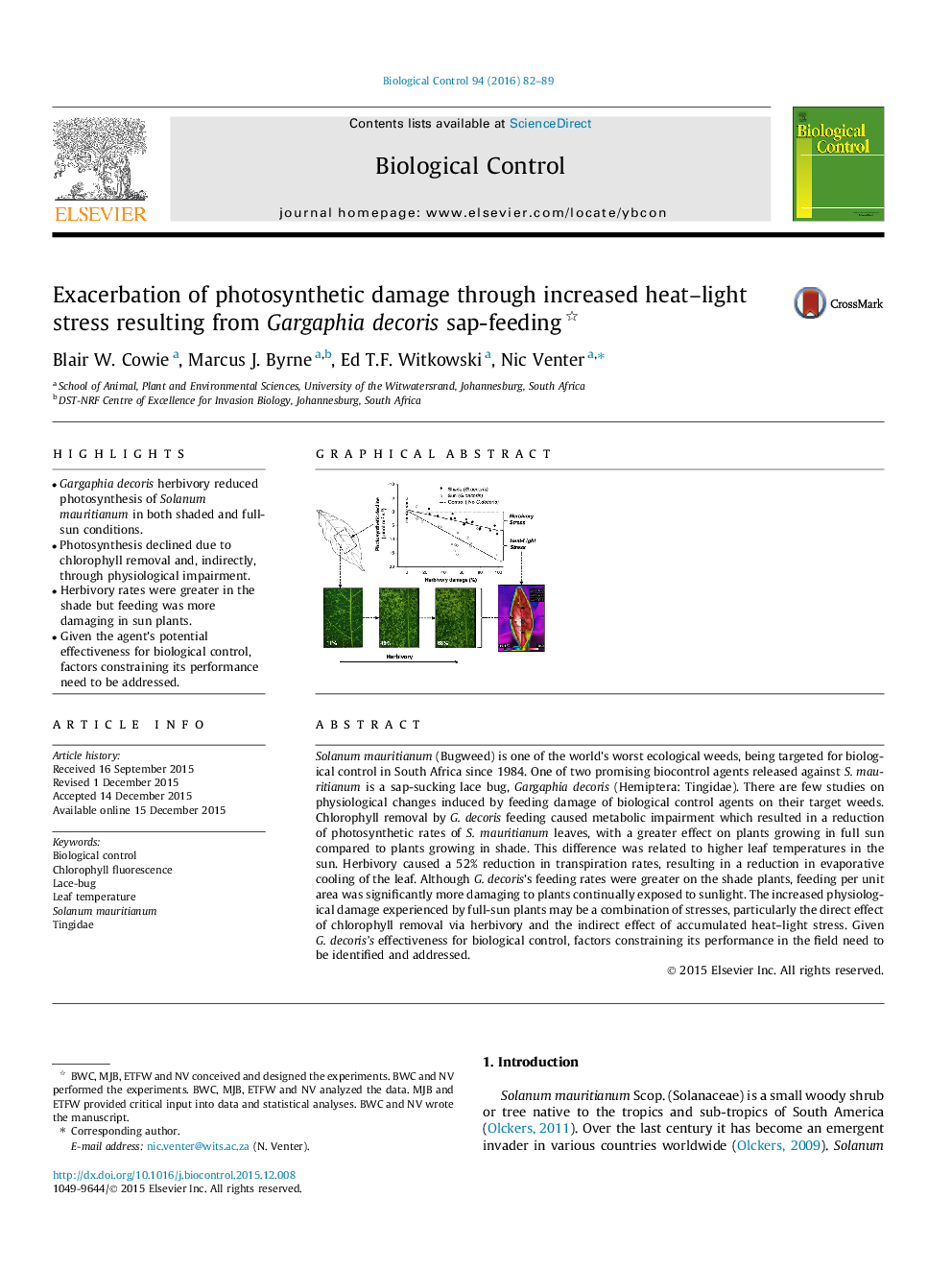| کد مقاله | کد نشریه | سال انتشار | مقاله انگلیسی | نسخه تمام متن |
|---|---|---|---|---|
| 4503735 | 1624240 | 2016 | 8 صفحه PDF | دانلود رایگان |

• Gargaphia decoris herbivory reduced photosynthesis of Solanum mauritianum in both shaded and full-sun conditions.
• Photosynthesis declined due to chlorophyll removal and, indirectly, through physiological impairment.
• Herbivory rates were greater in the shade but feeding was more damaging in sun plants.
• Given the agent’s potential effectiveness for biological control, factors constraining its performance need to be addressed.
Solanum mauritianum (Bugweed) is one of the world’s worst ecological weeds, being targeted for biological control in South Africa since 1984. One of two promising biocontrol agents released against S. mauritianum is a sap-sucking lace bug, Gargaphia decoris (Hemiptera: Tingidae). There are few studies on physiological changes induced by feeding damage of biological control agents on their target weeds. Chlorophyll removal by G. decoris feeding caused metabolic impairment which resulted in a reduction of photosynthetic rates of S. mauritianum leaves, with a greater effect on plants growing in full sun compared to plants growing in shade. This difference was related to higher leaf temperatures in the sun. Herbivory caused a 52% reduction in transpiration rates, resulting in a reduction in evaporative cooling of the leaf. Although G. decoris’s feeding rates were greater on the shade plants, feeding per unit area was significantly more damaging to plants continually exposed to sunlight. The increased physiological damage experienced by full-sun plants may be a combination of stresses, particularly the direct effect of chlorophyll removal via herbivory and the indirect effect of accumulated heat–light stress. Given G. decoris’s effectiveness for biological control, factors constraining its performance in the field need to be identified and addressed.
Figure optionsDownload as PowerPoint slide
Journal: Biological Control - Volume 94, March 2016, Pages 82–89